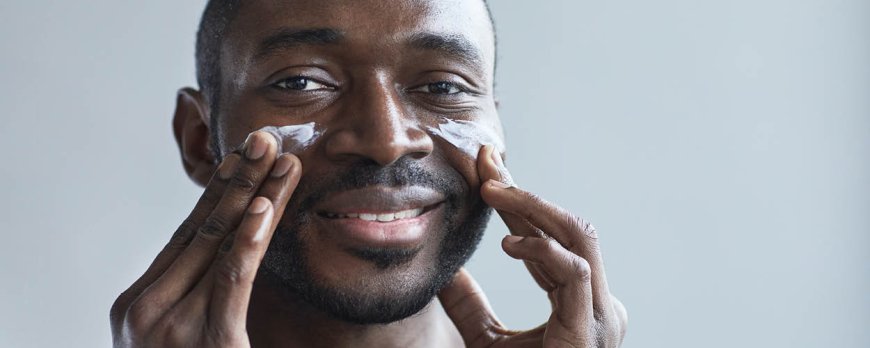Why does my face suddenly look different?
Explore the reasons 'Why does my face suddenly look different?' Discover factors such as aging, health conditions, and lifestyle habits affecting facial changes.

Why does my face suddenly look different?
Have you ever wondered why your face suddenly looks different? There can be various factors that lead to sudden changes in your facial appearance. Asymmetrical faces are common and can be caused by genetics, smoking, sun damage, aging, dental work, injury, lifestyle habits, Bell's Palsy, torticollis, and stroke. Facial symmetry is often considered more attractive, and there are treatments available to make the face more symmetrical, such as tooth replacements, orthodontics, TMJ treatment, and bite adjustment. Additionally, facial asymmetry can be a subtle sign of strain and ill-health, as well as a reflection of a person's childhood experiences. It is important to understand the causes and treatments for facial asymmetry if you are concerned about your appearance.
Key Takeaways:
- Sudden changes in facial appearance can be caused by various factors such as genetics, smoking, sun damage, aging, dental work, injury, lifestyle habits, Bell's Palsy, torticollis, and stroke.
- Facial symmetry is often associated with attractiveness, and there are treatments available to improve facial symmetry, including tooth replacements, orthodontics, TMJ treatment, and bite adjustment.
- Subtle changes in facial appearance can sometimes be indicative of underlying strain and ill-health.
- Childhood experiences can impact facial asymmetry.
- Understanding the causes and treatments for facial asymmetry is important for those concerned about their appearance.
Aging and Facial Changes
Aging is a common factor that can result in noticeable changes in your facial appearance. As we age, our skin loses elasticity, leading to the formation of wrinkles and fine lines. The production of collagen and elastin also decreases, causing the skin to become thinner and drier. These changes can contribute to sagging and drooping in various areas of the face, such as the cheeks, jawline, and eyelids.
Moreover, the loss of fat tissue in the face can lead to a hollowed appearance, particularly in the cheeks and temples. This can make the face appear gaunt and less youthful. Additionally, changes in bone structure, such as bone loss in the jaw and cheekbones, can further contribute to facial changes associated with aging.
To address these changes, there are various treatments available. Facial fillers can restore lost volume and plump up areas of the face, reducing the appearance of wrinkles and adding fullness. Procedures like facelifts and brow lifts can lift and tighten sagging skin, providing a more youthful and rejuvenated appearance. Additionally, non-invasive treatments like chemical peels and laser resurfacing can improve skin texture and reduce the appearance of age spots and discoloration.
While aging is a natural process that affects us all, it's important to remember that everyone ages differently. Lifestyle factors such as sun exposure, smoking, and skincare habits can influence the rate and severity of facial changes. By taking care of your skin and considering appropriate treatments, you can help minimize the effects of aging on your facial appearance and maintain a more youthful look.
Health conditions and facial changes
Certain health conditions can have a significant impact on your facial appearance, causing sudden changes that may be concerning. Factors such as genetics, smoking, sun damage, aging, dental work, injury, and lifestyle habits can all contribute to facial asymmetry. Conditions like Bell's Palsy, torticollis, and stroke can also lead to sudden changes in facial appearance.
Facial symmetry is often associated with attractiveness, and many people seek treatments to achieve a more symmetrical appearance. Tooth replacements, orthodontics, TMJ treatment, and bite adjustment are some of the available options for improving facial symmetry.
In addition to aesthetic concerns, facial asymmetry can also be a subtle sign of strain and ill-health. Changes in facial appearance can sometimes indicate underlying health issues, making it important to pay attention to these variations.
Childhood experiences can also play a role in facial asymmetry. Our early years can impact the development of our facial features, potentially leading to noticeable differences in appearance.

Lifestyle Habits and Facial Changes
Your lifestyle habits can play a role in sudden facial alterations, making your face look different than before. Factors such as smoking, sun damage, and dental work can all contribute to changes in your facial appearance. Let's explore these lifestyle habits and their impact on your face.
Smoking
- Smoking can lead to premature aging and the development of wrinkles, particularly around the mouth.
- It can also cause your skin to become dull and lose its elasticity, resulting in a sagging appearance.
- To minimize the effects of smoking on your face, it is advisable to quit smoking and adopt a healthy lifestyle.
Sun Damage
- Excessive sun exposure without proper protection can result in sunspots, uneven skin tone, and accelerated aging.
- UV radiation breaks down collagen and elastin, essential proteins that keep your skin firm and supple.
- To protect your face from sun damage, always wear sunscreen with a high SPF, a wide-brimmed hat, and seek shade during peak sun hours.
Dental Work
- Dental procedures, such as teeth extractions or orthodontic treatments, can alter the alignment and shape of your jaw.
- These changes can affect the overall symmetry of your face and result in a different appearance.
- Consult with your dentist to explore treatment options that can restore or enhance your facial symmetry.
By understanding how lifestyle habits can influence your facial appearance, you can make informed choices to maintain or improve your overall look. Remember, small changes in your habits can have a significant impact on your face. Take care of your skin, protect it from harmful factors, and consult with professionals to address any concerns you may have. Your face deserves the best care.

Facial Symmetry and Attractiveness
Facial symmetry is often considered more attractive, and changes in your facial symmetry can lead to sudden transformations in your appearance. A symmetrical face is characterized by balanced proportions and evenly distributed features. This aesthetic quality is deeply ingrained in our perception of beauty, as it is thought to reflect genetic superiority and overall health.
There are various factors that can contribute to facial asymmetry. Genetics play a significant role, as some individuals naturally have more pronounced differences between the left and right sides of their face. Additionally, lifestyle habits such as smoking and overexposure to the sun can cause premature aging and uneven skin tone, further exacerbating facial asymmetries.
If you are concerned about your facial asymmetry, there are treatments available to help improve the balance and symmetry of your features. Tooth replacements, orthodontics, and bite adjustment procedures can address dental-related asymmetries. For more complex cases, TMJ treatment and facial reconstruction surgeries may be recommended.
Enhancing Facial Symmetry
- Orthodontics: Correcting misalignments in the jaw and teeth can significantly improve facial symmetry.
- Facial exercises: Certain facial exercises can help strengthen the muscles on the weaker side of your face, promoting better symmetry.
- Dermal fillers: Injecting dermal fillers into specific areas of the face can help restore volume and create a more balanced appearance.
- Facial implants: In some cases, facial implants can be used to enhance the contours and symmetry of the face.
It is important to note that while these treatments can improve facial symmetry, achieving perfect symmetry is not always realistic or necessary. Embracing and celebrating your unique features is equally important. If you have concerns about your facial symmetry, consult with a qualified medical professional who can provide personalized recommendations based on your specific needs and goals.
Subtle Signs of Strain and Ill-Health
Sometimes, sudden facial variations can be subtle signs of strain and ill-health that shouldn't be ignored. Asymmetrical faces, for example, can be indicative of underlying factors such as genetics, smoking, sun damage, aging, dental work, or injury. These factors can cause one side of the face to appear different from the other.
Facial asymmetry can go beyond mere aesthetics and may be a reflection of a person's overall health. It can be a subtle indication of strain and ill-health, suggesting imbalances or underlying health conditions. It is important to pay attention to these variations and consider seeking appropriate medical advice if necessary.
If you are concerned about your facial appearance and suspect that it may be related to health issues, it is recommended to consult with a healthcare professional. They can help determine the underlying causes of the facial asymmetry and provide appropriate guidance or treatment options. Some conditions, such as Bell's Palsy, torticollis, or stroke, can also cause sudden changes in facial appearance and should be evaluated by a medical expert.
Understanding the Causes and Seeking Treatment
- Genetics
- Smoking
- Sun damage
- Aging
- Dental work
- Injury
- Lifestyle habits
Facial symmetry is often considered more attractive, and there are treatments available to address facial asymmetry. These may include tooth replacements, orthodontics, TMJ treatment, and bite adjustment, among others. It is important to consult with a qualified professional to discuss the suitable treatment options based on individual needs and circumstances.
By understanding the potential causes and available treatments for facial asymmetry, individuals can make informed decisions about their appearance and overall well-being. Remember, while sudden facial variations can be unsettling, they can also provide valuable insights into our health. Don't hesitate to reach out to a professional if you have concerns or questions.

Childhood experiences and facial asymmetry
Interestingly, sudden face shifts can be influenced by our childhood experiences, leaving lasting traces on our facial appearances. Our early years play a crucial role in shaping our physical features, including our faces. While genetics and environmental factors both contribute to facial asymmetry, childhood experiences have also been found to have an impact.
One significant factor is the way we use our facial muscles as children. Frequent habits such as favoring one side of the face while chewing, sucking a thumb, or even constantly sleeping on one side can lead to facial asymmetry over time. These repetitive movements can affect the growth and development of the bones and muscles in the face, resulting in noticeable imbalances.
Additionally, traumatic events or injuries during childhood may also contribute to facial asymmetry. Facial bone fractures or accidents that affect the alignment of the jaw can cause changes in the facial structure, leading to a less symmetrical appearance. These childhood experiences can leave a lasting impact, affecting not only our physical appearance but also our overall well-being.
Understanding the connection between childhood experiences and facial asymmetry can help individuals address any concerns they may have. Whether it's seeking orthodontic treatment, dental corrections, or exploring other options like bite adjustment and TMJ treatment, there are various methods available to improve facial symmetry. By identifying and addressing the underlying causes, individuals can regain confidence in their appearance and potentially mitigate any potential strain or ill-health associated with facial asymmetry.

Treatments for Facial Asymmetry
If you're concerned about sudden changes in your facial appearance, there are treatments available to address facial asymmetry. Whether the asymmetry is due to genetic factors, aging, or lifestyle habits, there are options to help improve the balance and symmetry of your face.
Orthodontics
One common treatment for facial asymmetry is orthodontics. By utilizing braces or aligners, orthodontists can gradually shift the position of your teeth and jaw, helping to correct any imbalances and achieve a more harmonious facial appearance. This can not only improve the aesthetics of your smile but also enhance overall facial symmetry.
TMJ Treatment and Bite Adjustment
Temporomandibular joint (TMJ) disorders and bite irregularities can contribute to facial asymmetry. TMJ treatment aims to alleviate pain and correct jaw alignment issues, which can help restore facial symmetry. In some cases, a bite adjustment may be recommended to ensure the teeth fit together properly, further enhancing facial balance.
Tooth Replacements
Missing or damaged teeth can significantly affect facial symmetry. Tooth replacements, such as dental implants or bridges, can help fill in gaps and restore a more natural and balanced appearance. These prosthetic solutions not only improve aesthetics but also support proper jaw alignment and function.
Non-Surgical Treatments
In addition to orthodontics and dental procedures, there are non-surgical treatments available to address facial asymmetry. These may include injectable fillers to add volume or Botox injections to relax specific muscles and improve facial symmetry. These minimally invasive options can provide temporary improvements without the need for surgery. If you are experiencing sudden changes in your facial appearance or are unhappy with facial asymmetry, consult with a qualified healthcare professional or cosmetic dentist. They can assess your specific needs and recommend the most suitable treatments to help restore facial balance and improve your overall appearance. Remember, addressing facial asymmetry can not only enhance your confidence but also contribute to your overall well-being.
Conclusion
In conclusion, sudden changes in facial appearance can be caused by a range of factors, including aging, health conditions, lifestyle habits, and even childhood experiences. Asymmetrical faces are common and can be influenced by genetics, smoking, sun damage, dental work, injury, and various other factors. The natural process of aging also plays a significant role in facial changes, affecting different features over time.
Facial symmetry is often considered more attractive, and there are treatments available to address facial asymmetry. Tooth replacements, orthodontics, TMJ treatment, and bite adjustment are among the options that can help improve facial symmetry and enhance overall appearance. It is important to consult with healthcare professionals or specialists in order to determine the most suitable treatment for individual needs.
In addition, subtle changes in facial appearance can sometimes be indicative of underlying strain and ill-health. It is essential to pay attention to these variations as they can be an early indication of potential health issues and should not be ignored.
Furthermore, research suggests that childhood experiences can impact facial asymmetry. Traumas, injuries, or growth disruptions during the formative years can contribute to changes in facial appearance later in life. Understanding the relationship between childhood experiences and facial asymmetry can provide valuable insights into personal development and overall well-being.
Overall, sudden changes in facial appearance can be complex and multifactorial. By recognizing the various causes and available treatments for facial asymmetry, individuals can make informed decisions and seek appropriate interventions if they are concerned about their appearance.
FAQ
Why does my face suddenly look different?
Sudden changes in facial appearance can be caused by various factors, including genetics, smoking, sun damage, aging, dental work, injury, lifestyle habits, Bell's Palsy, torticollis, and stroke.
How does aging affect facial changes?
The natural process of aging can cause changes in facial appearance. Different facial features are affected in specific ways as we age.
Can health conditions lead to sudden facial changes?
Yes, certain health conditions like Bell's Palsy, torticollis, and stroke can lead to sudden changes in facial appearance.
What lifestyle habits can contribute to facial changes?
Lifestyle habits such as smoking, sun damage, and dental work can contribute to facial changes and alter your appearance.
Is facial symmetry important for attractiveness?
Yes, facial symmetry is often considered more attractive. There are treatments available to improve facial symmetry if desired.
Can subtle changes in facial appearance indicate strain and ill-health?
Yes, subtle changes in facial appearance can be a sign of strain and ill-health. It is important to understand these variations and seek medical advice if necessary.
Is there a relationship between childhood experiences and facial asymmetry?
Yes, childhood experiences can impact facial asymmetry, and our early years can have an influence on our facial appearances.
What treatments are available for facial asymmetry?
Treatments for facial asymmetry include tooth replacements, orthodontics, TMJ treatment, and bite adjustment. Consultation with a healthcare professional is recommended to determine the most suitable treatment.


































































































































